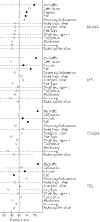Determining objective injury prevention priorities
- PMID: 17018680
- PMCID: PMC2563470
- DOI: 10.1136/ip.2006.011494
Determining objective injury prevention priorities
Abstract
Background and objective: Finite injury prevention resources make the establishment of prevention priorities essential. Toward this end, the US National Trauma Data Bank (NTDB) for 2000 to 2004 was accessed and four injury prevention priority scores (one previously defined and three new scores) were computed.
Methods: An injury prevention priority score (IPPS) was calculated based on the frequency of an injury mechanism and the median injury severity score. In addition, a mortality priority score (Mort-PS), a hospital charge priority score (Charge-PS), and a years of potential life lost (YPLL-PS) priority score were calculated for the 13 most common injury mechanisms.
Results: There was variability across the four scores, but motor vehicle traffic, firearm related, and fall injuries ranked high on all four of the priority criteria. Multiple criteria should be considered when assessing injury burden.
Conclusions: The methods presented here can help prioritize injuries and support more objective public policies.
References
-
- Peden M M, McGee K, Krug E.Injury: a leading cause of the global burden of disease, 2000. Geneva: World Health Organisation, 2002
-
- Anonymous Medical expenditures attributable to injuries – United States, 2000. MMWR Morb Mortal Wkly Rep 2004531–4. - PubMed
-
- Finkelstein E A, Corso P S, Miller T R.et alIncidence and economic burden of injuries in the United States. New York: Oxford University Press, 2006
-
- Hendrie D, Miller T R. Assessing the burden of injuries: competing measures. Injury Control and Safety Promotion 200411193–199. - PubMed
Publication types
MeSH terms
LinkOut - more resources
Full Text Sources
Medical

